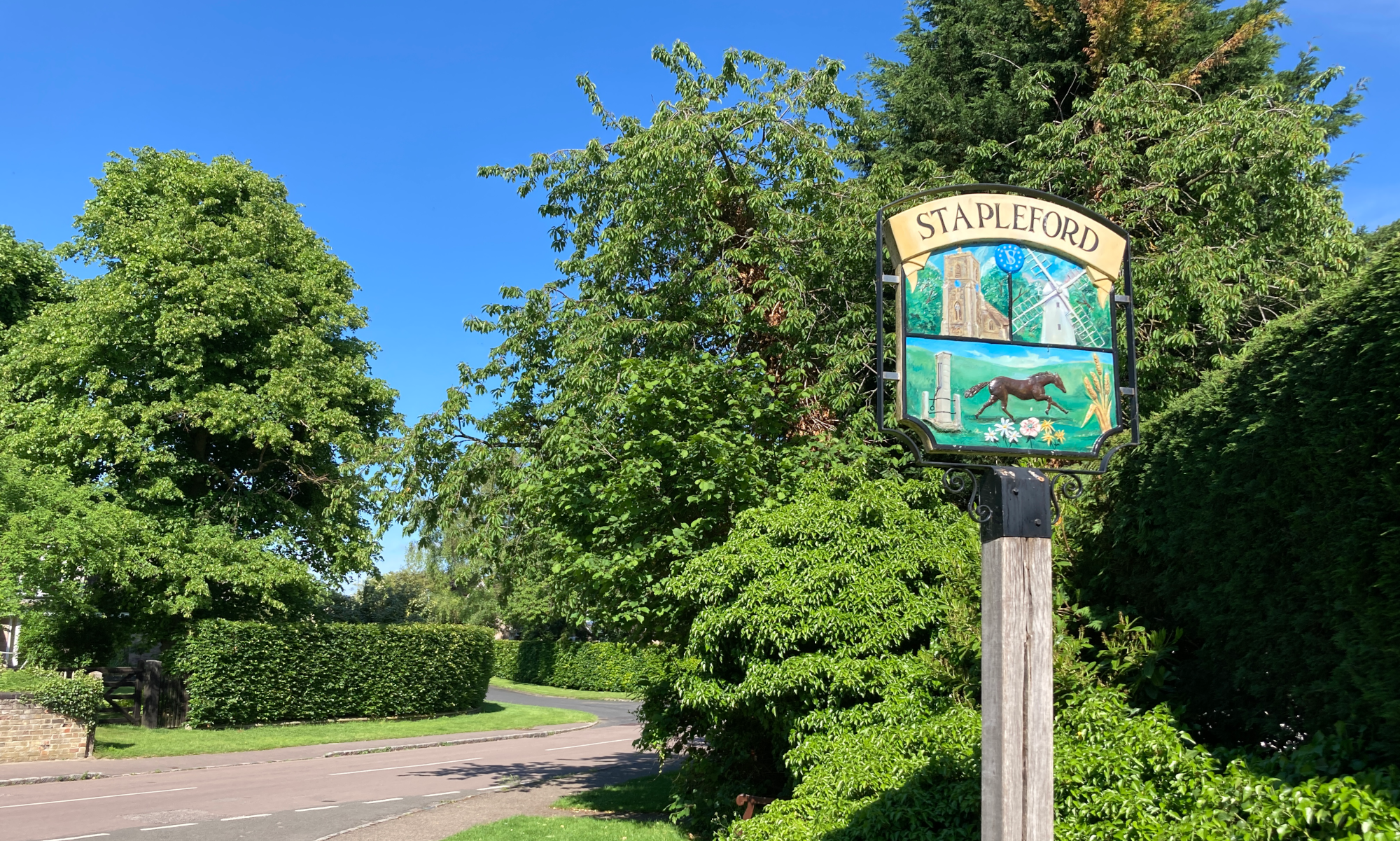Stapleford History Society 14 October 2014
Talk by Mary Dicken
Well over 40 members and visitors gathered for an enthralling talk by Mary Dicken, Chair of the Sawston Village History Society – and one-time guide privileged to show visitors around Stapleford’s nearest ‘stately home’, Elizabethan Sawston Hall. I had known, vaguely, that the Hall and the Huddleston family had played a role at the time of the accession of Queen Mary I (aka ‘Bloody Mary’), and that it had recently housed a language school and was now again in private hands. I missed the period when it was open to the public, and was unaware of how much of its grand and charming architecture and furniture remained, at least until the Huddlestons were obliged to sell in 1982. With a wonderful array of photographs, we were guided around by Mary with expertise, anecdote and fascinating historical detail.
For a family whose crest boasts a pair of arms holding up a bleeding scalp, the Stapleford Huddlestons seem on the whole to have been a quiet and piously Catholic lot. The scalp refers to a Crusader Huddleston held captive in Algeria who was beloved of the ruler’s daughter. Since he was tied to the prison wall by his hair, she was obliged to cut it off, along with a chunk of skull, but they escaped together. A branch of this Cumberland family settled in Sawston in the early 16th century, in a mainly wooden manor house.
Their moment of glory arrived in July 1553. Henry VIII’s teenaged son, Edward VI, was dying. His chief minister, the Duke of Northumberland, was desperately trying to keep the legitimate heir, Edward’s Catholic sister Mary, from the throne and replace her with his own daughter-in-law, the Protestant Lady Jane Grey. Evading Northumberland’s troops, Mary and some supporters found refuge with the loyal Huddlestons, but after one night were warned to flee. Disguised as a milkmaid, she rode up to the Gogs; looking back, the Sawston manor house was already in flames. Queen Mary never forgot the Huddlestons’ sacrifice for her and allowed them to rebuild using stone from the ruins of Cambridge Castle. During the rebuilding Mary died, and Elizabeth I restored the Protestant religion – explaining the three priest-holes built into the Hall’s fabric.
As Mary Dicken explained, the Huddlestons survived the long persecution of Catholics and embellished their Hall over the generations, producing some interesting characters. They reliably begot male heirs in every generation from 1550 to 1890, but after that the estate had to be parcelled out among other relatives and became less and less viable until sale was necessary in 1982. Since it now appears that Sawston Hall is unlikely to be publicly visitable at least in the near future, it was terrific to have this first-hand account from such a knowledgeable guide, and to see her photographs and prints.
[report by Maureen Street]

